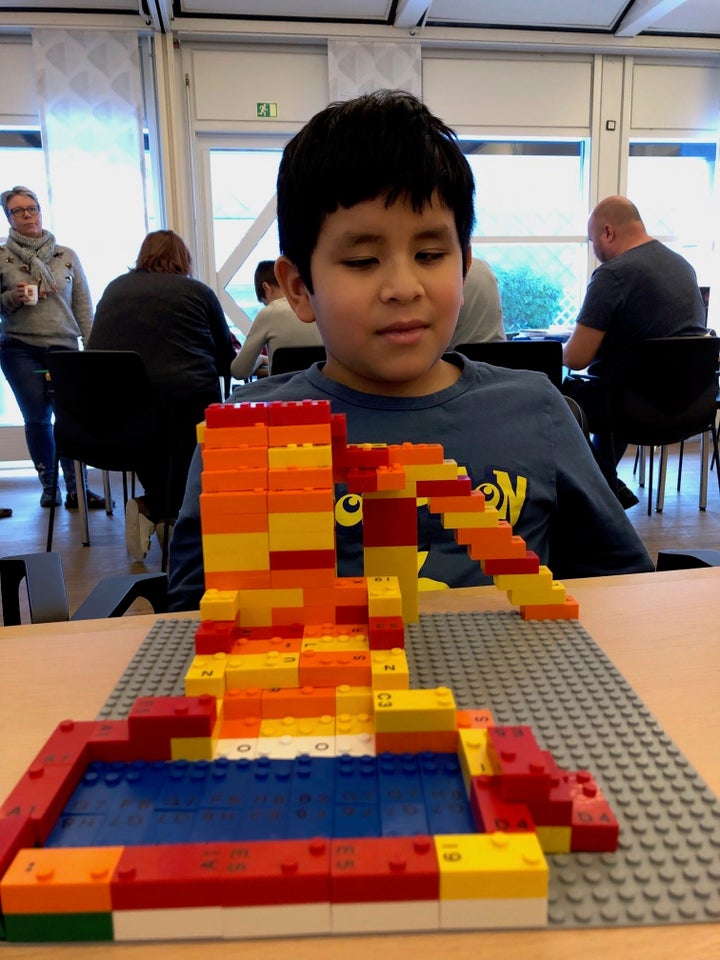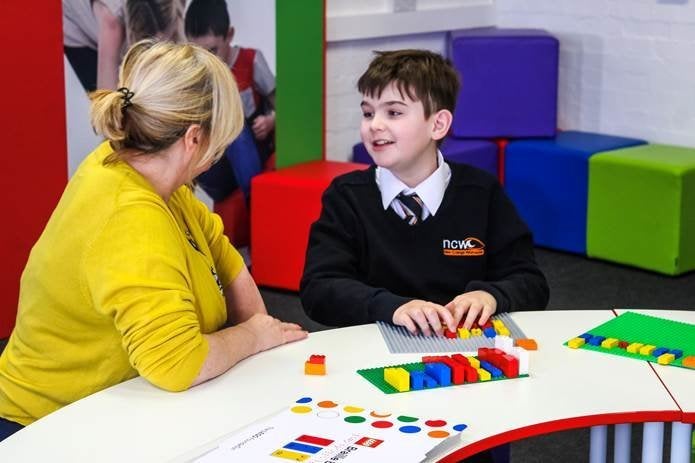People who don’t need Braille don’t tend to know a huge amount about how it works. Its system of raised dots can seem quite unfathomable, but that could change, with new plans by Lego to make it much more accessible to learn.
The Danish toy brand has unveiled Braille sets – one of those ideas that, as soon as you hear about it, seems like a match made in heaven.
The sets will teach children with – and without – visual impairments how to use Braille in a fun and interactive way. The blocks have numbers and letters on them in Braille, so children can play and learn at the same time.
Braille Bricks have already been piloted in a number of UK schools, and will be introduced into more schools and blindness charities from 2020. Each set will contain 250 bricks, including the alphabet, numbers and mathematical symbols. All will be compatible with existing Lego, and have printed versions of what they represent – allowing non-Braille users to learn the system.
Kate is the mother of nine-year-old, Callum, who has a visual impairment. The American family, who live in Denmark, took part in a trial of the Braille Bricks – where Lego-loving Callum “absolutely went to town”.
“My son and I had been learning Braille for about six months, but it was really hard to get my daughter or husband to take an interest in it,” Kate tells HuffPost UK. “As soon as it was Lego – and not just strange little dots on a piece of paper – they got really excited and were learning the alphabet and writing their names.”

Kate says the bricks were “so much more persuasive” than trying to convince her family that learning Braille was a good idea, and it meant her son no longer felt it was something only he had to learn because he had something wrong with him – “it was something fun we could all do together.”
“It’s the Braille equivalent of shaping vitamins like gummy bears,” she adds. “It’s making something that can seem strange, difficult and weird feel totally normal and going, let’s play!”
While digital devices can offer assistance to children with visual impairment, learning Braille gives them the very basic skills of reading and writing – which are fundamental to their development and independence.
At the beginning of the project, the team at Lego spoke to experts in the field and learned there were limited tools available to teach Braille. “Few of the existing options allow flexibility for children to test and learn,” says Stine Storm, project lead on the Braille Brick. “The Perkins machine [one of the most common Braille typewriters] is heavy, difficult to navigate and mistakes cannot be corrected on it.”
A Perkins machine makes a physical indentation into a piece of paper – so it can’t be undone. “Reproducing anything in Braille involves manually typing it out on the Perkins, which is very limiting,” explains Kate. “The Lego is great because you can quickly spell things out without sitting there going bang, bang, bang, bang, bang.”

Visually impaired children and their parents have been involved in the project, as well as charities from Brazil, Denmark, Norway and the UK – and Lego staff members themselves.
“When I was shown the Braille bricks for the first time, I had a very emotional experience,” says Morten Bonde, who has a genetic condition that means he is slowly losing his sight (he gives some pretty inspirational talks on the subject).
Bonde was working as a senior art director at Lego with only four degrees of vision when he was contacted by the foundation to get involved in the project. “It felt like a calling,” he says. “I would like to help give blind children the desire to embark on challenges, learn to fail, learn to see life as a playground, where anything can come true if you believe that it can.”
Bonde is working on the packaging of the bricks, experimenting with fonts and colours to best suit visually impaired users. Braille presents unique challenges, though, with every language needing its own set of bricks due to how it uses a single sign to represent common combinations of letters. Fifty new moulds are currently being developed and various distribution plans are being looked at.
But 2020 is not far off, when blind and visually impaired people – not just children – will have access to something that simply didn’t exist before, a way of reading and writing that solves many of the practical problems Braille presents.
“Students of Braille can have a flexible tool in which they can easily play around with letters and numbers in a way that has not been possible before,” says Storm. “Blind and visually impaired children have hopes and dreams just as sighted children, and we want to give them a unique and playful hands-on tool to learn Braille, essential for reaching their goals and aspirations in life.”